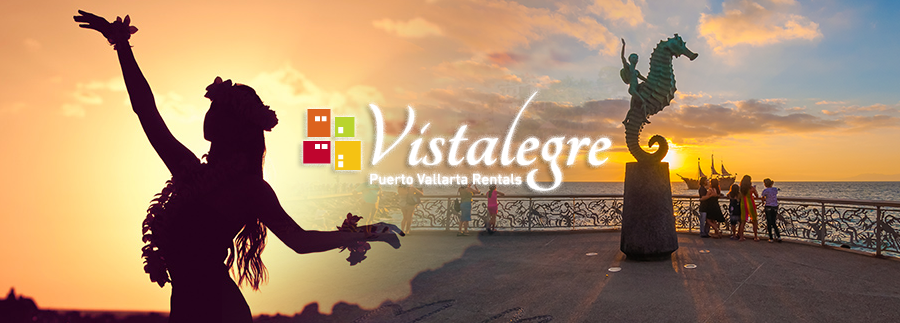The Best Destination: Hawaii v PV

The Best Destination: Hawai'i or Puerto Vallarta?
Hawai'i quickly springs to mind when imagining the most desirable destinations in the Americas, and rightfully so. The spectacular scenery and rich local culture of the area make it a compelling choice for both tourists and travelers, giving each of them the opportunity at an unforgettable experience.
However, Puerto Vallarta is also a dream vacation spot for travelers around the world, making deciding between them for your next holiday a daunting task. While factors such as a preference for local foods, customs and other cultural aspects are extremely subjective, there are some aspects of travel abroad which are of reasonable concern to all travelers.
Both Puerto Vallarta and the most popular destinations in Hawai'i offer good infrastructure, availability of services and societal stability, and make enjoyable travel destinations that consistently deliver peace of mind as well as picturesque scenery. Where the two destinations distinguish themselves is through other factors that can impact the quality of a visit.
Hawai'i Basics
Hawai'i is known the world over for its magnificent tropical scenery and active volcanoes, which draw in millions of tourists every year. The 50th and most recent U.S. State and the only one located North America, it is composed entirely of islands in the It occupies the Hawaii-Aleutian Time Zone, a full 4 hours behind Eastern Standard Time. It also does not observe Daylight Savings Time, which may increase the effect of jet lag on visitors traveling from the eastern or northern parts of America and Canada.
Weather: Puerto Vallarta
When it comes to glorious sunshine and sparkling sands, both locales offer more than their fair share to locals and visitors. Like Puerto Vallarta, Hawai'i typically experiences perfect weather nearly year-round, with temperatures almost always within a few degrees of 88ºF (31ºC) thanks to its placement in the tropics. It has fairly low humidity and rarely suffers from oppressive heat.
However, Puerto Vallarta's rainy season (June to September) is significantly shorter than Hawai'i's (October to April). The timing of Hawai'i's rainy season also coincides with major American and Canadian vacation periods. Mexico also has less days impacted by rainfall overall, with Hawai'i experiencing precipitation on over 220 days yearly compared with Puerto Vallarta's 71 days with rain per year.
This nearly uninterrupted supply of ideal weather is a natural choice for visitors who wish to experience the signature elements and activities a sunny coastal town offers at any time of year.
Safety: Puerto Vallarta
Like Puerto Vallarta, Hawai'i has driven extensive resources to maintaining the safety and integrity of their tourist destinations. Still, areas including Oahu have experienced a rash of purse snatchings involving vulnerable female pedestrians. Hotels are also widely open to the public in Hawai'i, in contrast to Puerto Vallarta's larger tourist accommodations, which are typically secure facilities with armed guards on watch. Together with the dedicated tourist police force in town to ensure public protection, it can safely be said that Puerto Vallarta's approach to visitor safety is second to none.
Ease of Access: Hawai'i
Both Hawai'i and Puerto Vallarta are serviced by a range of major air carriers as well as by ship. Where Hawai'i does possess a clear advantage over Puerto Vallarta for American citizens is in its status as a US territory, meaning Americans can visit the country by sea and air without requiring a valid passport. While Canadians and other foreign nationals can also travel to Hawai'i by sea without requiring a passport, but they and most other visitors will also require international travel documents in order to board a flight to Hawai'i.
Environmental Concerns: Puerto Vallarta
One of the unique benefits of Puerto Vallarta is its placement between the Sierra Madre mountain range and the Banderas Bay that funnels Mexico's waters into those of the Greater Pacific Ocean. This protected position naturally weakens major storms that approach the area, and as a result the city rarely experiences damage from hurricanes and tropical storms.
Hawai'i, born of heavy tectonic activity in the continental plates that lie deep within the Pacific Ocean, is almost a direct example of the opposite. Not only are many of the state's active volcanoes identified as eruption risks, the islands are also exposed to earthquakes and tsunamis due to their placement in distant international waters.
Exchange Rate: Puerto Vallarta
Of course, as a United State, Hawai'i's currency is the US dollar. While this presents minimal concerns for Americans, who can even skip changing currency, it is also a constant issue for Canadians and other prospective international visitors. The Canadian dollar's fluctuating value against the US Dollar can make the trip disproportionately expensive even before factoring the higher than typical costs in Hawai'i's most celebrated locales when compared to other areas of the US.
On the other hand, Americans, Canadians and other international travelers receive significant value by traveling to Mexico. The exchange rate for these currencies when weighed against the Mexican peso is highly favorable to these visitors, and as a result they are able to get the absolute most out of their time in a sun bathed wonderland.
Travelers from around the world hold both Puerto Vallarta and the tourist towns of Hawai'i in high regard. Nevertheless, a visit to Puerto Vallarta, Mexico holds tangible advantages for the savvy visitor, and is well worth consideration for your next travels.
Back To Topics



